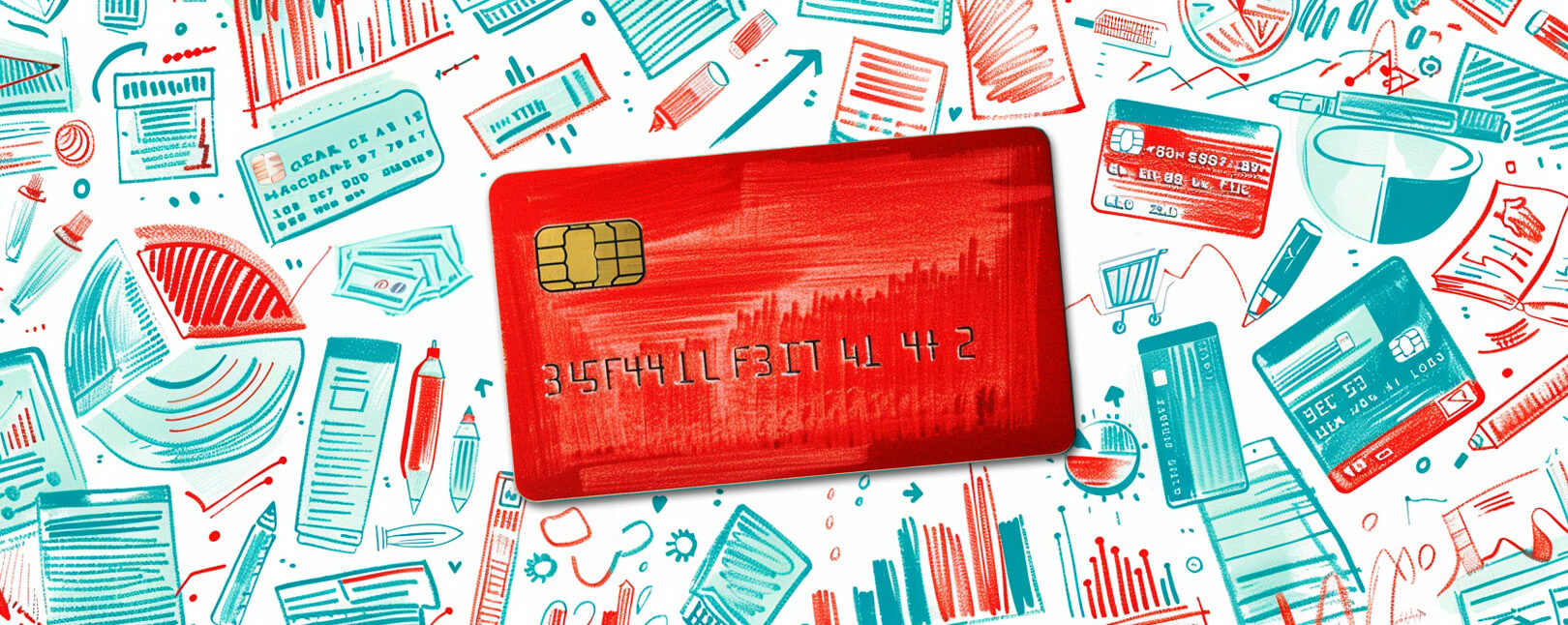Insulating Your Business From Overpayment Scams & Fraud
Digital merchants don’t usually have the luxury of meeting their customers face-to-face. Because you have minimal direct interaction with buyers, you have to be even more proactive about identifying fraud red flags and responding appropriately.
With that in mind, imagine this scenario: you make a sale through an online marketplace or commercial portal. The buyer contacts you for prompt payment, and actually offers to pay more than you initially asked. The only catch: they ask you to refund the overpayment portion to a third party.
The buyer might claim it’s for a private shipping service, or to cover customs costs. More likely than not, however, it’s a textbook example of an overpayment scam.
Overpayment scams can take many forms, but generally speaking, they exist to rip you off through redirected funds. So, let’s find out how they work, what they entail, and what you can do to avoid them.
Recommended reading
- Address Fraud: How Criminals Swap Addresses to Abuse Victims
- How do Banks Conduct Credit Card Fraud Investigations?
- What is Wardrobing? How Can Retailers Stop Refund Abuse?
- Key Credit Card Fraud Statistics to Know for 2024
- Scammers See Opportunity as March Madness Begins
- Man-in-the-Middle Attacks: 10 Tips to Prevent These Scams
What is an Overpayment Scam?
- Overpayment Scam
An overpayment scam refers to a cash forwarding or advance payment fraud tactic. Fraudsters will use stolen credit card details to initiate a transaction, then offer to overpay the total amount due. Once the overage has been agreed to, the fraudster will request the overage be returned to a different payment account or another third-party source. The aim is to convert the available account balance or credit line to liquid cash.
[noun]/Ōvər • pā • mənt • skam/Most of the time, overpayment scams revolve around someone overpaying for an item using a stolen credit card, check, or money order. The buyer will contact you to arrange a means by which you can return the excess overage through a third account unrelated to the original purchase.
Now, this probably seems sketchy to most of us right off the bat. However, depending on the context of the sale, this scam might not be so easy to spot.
For example, many overpayment scams target amateur or non-practiced merchants. They focus on high-value items like used cars or electronics which these sellers might try to move through an online marketplace.
The scammer will often be located far away. They may even live overseas. However, the buyer will claim to have seen your listing on craigslist, or on Facebook Marketplace, and declare that they want to buy it for more than you are asking just to ensure no one else buys the listing before they do. The idea is to make an offer that seems too good to be true (because it actually is).
How Do Overpayment Scams Work?
Overpayment scams work because they use seemingly legitimate credit card or bank credentials to facilitate payment online or over the phone. You rarely (if ever) meet the scammer face-to-face.
Scammers might provide an incentive as an added lure to entice victims. For example, one could “pay” for an item, then ask you to return the overage minus a “comission” or “tip” for your trouble. Typically, the fraudster’s excuse for the overage and return has to do with cross-country or international shipping fees.
Overpayment scams typically work this this:
- You list a product or service for sale online. For example, it may be a used car, furniture set, or costly electronic device.
- You receive a DM or email offering to pay you more for the item than your listed price. You’re told this overage is to cover shipping, handling, or some other charge.
- The buyer sends you a digital payment, or a check or money order. The buyer claim that the overage is to pay for shipping or handling and must be made out to a third party or secondary account.
- You deposit their check or money order or send the additional funds electronically, and send the goods along to the buyer, as per their instructions.
- Your bank or processor informs you that the original payment method was fraudulent. You don’t get to keep the funds, and the fraudster has disappeared with your goods.
Overpayment scams are a regular problem for users of online classified services like OfferUp, Facebook Marketplace, and Thumbtack. Scammers understand that many larger businesses have all manner of anti-fraud safeguards in place to prevent situations like this from occurring. Smaller businesses like antique dealers, contractors, or vintage clothing dealers, however, are not as well insulated against such attacks.
Overpayment Scams vs. Refund Fraud
Overpayment scams are closely related to return fraud.
At its core, an overpayment scam relies on the same tactic of using stolen banking or credit card credentials. And, in both cases, the aim is to funnel false refunds and returns to the scammer’s account.
Specifically, return fraud happens when customers steal from a retailer by returning items that do not qualify for a return or refund. This can be the result of an honest mistake on the part of the consumer. An increasing number of cases involve premeditation and malicious intent, though.
Regardless of how it happens, return fraud is a real and growing threat to merchants. It can result in substantial revenue loss.
The main difference between overpayment fraud and return fraud is the methodology. Overpayment scammers may be able to steal the funds and items from the original transaction like most return fraudsters. However, they add on that additional repayment scam at the end. In essence, they’re victimizing you twice.
The Consequences of Overpayment Scams
Let’s face it: overpayment scams can lead to a lot of headaches for sellers like you.
You might be trying to run a small business. If so, your money is not unlimited, and your support systems are relatively few and far between. Thus, losing money to a carefully executed scam like this can really make life difficult.
Here are a few ways overpayment scams can impact your bottom line:
Overpayment Fraud Schemes & Chargebacks
Although chargebacks are probably the last consequence you’d expect after a case of overpayment fraud, they are an unwelcome possibility.
Chargebacks are essentially forced bank reversals that may occur if you provide unsatisfactory products or services to a customer. They may also result from fraud, though.
To illustrate, let’s say a fraudster gives you a stolen credit card number as part of a transaction. The buyer requests that you run the card for an amount larger than the purchase total to cover shipping and handling fees. Afterward, the legitimate cardholder discovers the fraudulent transaction. They call their issuing bank and request a chargeback to recover the funds lost.
You will be held responsible for those missing funds. You’ll also be responsible for paying any chargeback fees associated with the transaction.
In other words, with a chargeback, you lose on three fronts. You lose the goods sold, as the funds from the purchase. Then, you get slammed with added fees and penalties.
Should I Report Overpayment Fraud?
Anytime you recognize fraud, you should report it to your bank first, then contact the Federal Trade Commission about the scam as soon as possible.
According to the FTC, they share internet scam reports concerning telemarketing, identity theft, and others through Consumer Sentinel. This is a secure, online database available to hundreds of civil and criminal law enforcement agencies in the U.S. and abroad.
While it’s not likely that you’ll be able to recover the funds after such an incident, reporting an overpayment scheme does have a positive effect. When you report fraud incidents like this, it helps the commission compile data. Hopefully, this will enable them to take steps to mitigate these issues in the future.
You can report fraud on the FTC’s official website.
How to Prevent Overpayment Scams
So, we should now fully understand what payment scams are, how they work, and why we really want to avoid them. Next, let’s talk about how we can prevent them from happening in the first place.
Here are a few tips to avoid overpayment scams:
Ask for Help When Needed
Lastly, as a seller or merchant, you are responsible for any revenue lost to overpayment fraud. Banks and processors wash their hands of the situation the second the scam is reported. So, it’s very important for you to keep an eye out for unusual consumer behavior and protect your business from fraudsters.
Having said that, there are institutions and agencies available that are ready to help you craft an effective fraud mitigation strategy.
At Chargebacks911®, we create custom fraud management strategies for merchants tailored to your company’s unique needs. Contact us today to learn how we can help you fight back against return fraud, friendly fraud, and many other threats.
FAQs
Can someone scam me by sending me money?
Yes. Never accept an overpayment for any product or service, and be extremely wary of anyone attempting to promote one.
What is an overpayment scam?
An overpayment scam refers to a cash forwarding or advance payment scheme. Fraudsters will use stolen credit card details to initiate a transaction, then offer to overpay the total amount due. Once the overage has been agreed to, the fraudster will request the overage be returned to a different payment account or another third-party source.
How do overpayment scams work?
Overpayment scams typically involve a seller listing a high-value product or service for sale. The seller then receives a message offering to pay more for the item than the asking price. The overage is often claimed to be meant for shipping or some other charge, and must be made out to a third party or secondary account.
The buyer sends a fake check or money order featuring the overpayment, or pays via a stolen credit card. Once the seller deposits their funds, the bank informs tem that the original payment method was fraudulent. By this point, the scammer has vanished with the goods, as well as the stolen overpaid funds.
Is an overpayment scam the same as refund fraud?
Overpayment scams are related to return fraud, but are not the same thing. At its core, an overpayment scam relies on the same tactic of using stolen banking or credit card credentials to funnel false refunds and returns to their personal credit cards or bank accounts. However, refund fraud is usually not intended as a malicious attempt to “scam” anyone.
How should I report overpayment fraud scams?
Anytime you recognize fraud, you should report it to your bank first, then contact the Federal Trade Commission about the scam as soon as possible. While it’s not likely that you’ll be able to recover the funds after such an incident, reporting an overpayment scheme does have a positive effect. You can report fraud on the FTC’s official website.
How can I protect myself against overpayment scams?
You can avoid overpayment scams by being wary of any customer offering to overpay. You should also verify cardholder credentials before a purchase, and never forward funds or bend your own rules to accommodate a potential buyer.














